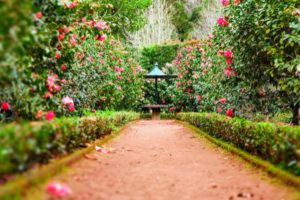
(Photo Credit: CaroleGomez/iStock)
It’s a slow, yet rewarding process of creating living sculptures!
Growing a Bonsai tree is an ancient art. The plant comes from China, though it’s often connected to Japan. Either way, the Bonsai tree is a unique plant, and growing it is an honor.
There are many different variations of Bonsai trees. What you need to do first is to decide which one will suit you the most. Some trees die in freezing weather, while others require the temperature to drop below freezing so that they can prepare for the spring. Choose a tree that will thrive according to your area of living, especially if you plan to keep it outside. For beginners, juniper is a perfect variation of the Bonsai tree. Juniper trees are easy to grow since they respond well to pruning and other training efforts, and they never lose their leaves.
Other conifers usually cultivated as Bonsai trees include pines, spruces, and cedars of many types. Japanese maples are gorgeous, as are magnolias, elms, and oaks. Some non-woody tropical plants, like jade and snow rose, are prime choices for indoor conditions in cold climates.
Once you determine which varieties will survive the climate in your area, it’s time to choose the best plant. Will it be a houseplant, or do you want to see it grow outdoor? For houseplants, the most popular ones are Ficus, Hawaiian Umbrella, Serissa, Gardenia, Kingsville Boxwood. For outdoor growing, it’s best to use Juniper, Cypress, Cedar, Maple, Birch, Ginkgo, Larch, Elm.
Some Bonsai tree species can be quite large. That’s why it is essential to make a decision and find all the right tools which will help you grow a healthy and happy plant. From the size of the container to the space available, sunlight, these are all essential questions to finding a perfect Bonsai tree.
Delicate Bonsai requires watering only when the soil is dry. Most Bonsai trees should be fertilized during their growing season, from early spring to mid-fall. Just like with everything else, Bonsai trees have special fertilizers explicitly made for them. Once your tree is fairly set, you can leave it outdoors in a spot where it receives morning sun and afternoon shade. Tropical plants and other fragile bonsai species may need to be kept indoors permanently if your local climate isn’t suitable.
Bonsai trees are beautiful, mesmerizing, but they do require a different routine, which makes them even more unique. So much so that many botanical gardens offer classes and demonstrations in growing and training Bonsai.







